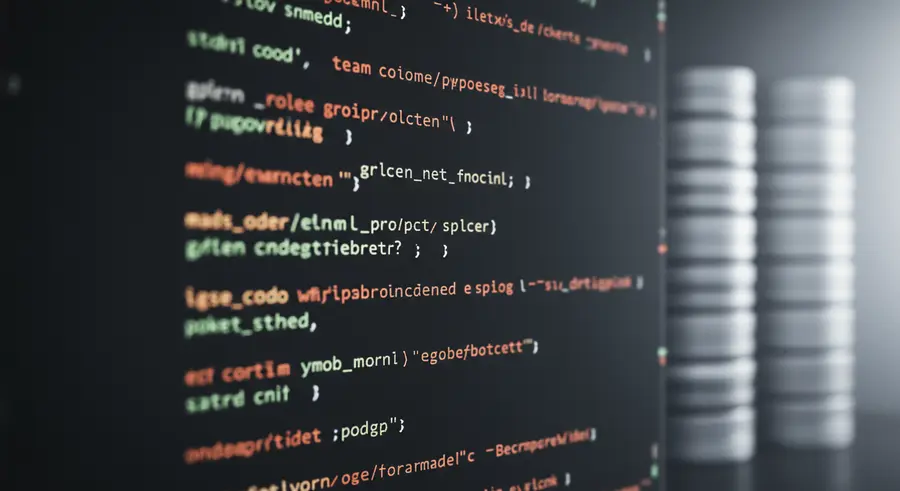Appearance

Hello, fellow developers and tech enthusiasts! 👋 Today, we're diving into a topic that's close to every seasoned developer's heart: Clean Code. What is it, why is it so important, and how can we write code that's not just functional, but also a joy to read, understand, and maintain? Let's unlock the secrets to crafting elegant and robust software!
What Exactly is Clean Code? 🧐
Imagine reading a beautifully written novel where every sentence flows, every paragraph makes sense, and the story unfolds effortlessly. Now, compare that to a jumbled mess of words with no structure, typos everywhere, and a plot that's impossible to follow. Which one would you prefer to read?
Clean code is the "beautifully written novel" of software development. It's code that is:
- Readable: Easily understood by anyone, not just the original author.
- Maintainable: Simple to modify, fix bugs, or add new features without introducing new issues.
- Extensible: Easy to build upon and adapt to future requirements.
- Testable: Designed in a way that allows for easy and comprehensive testing.
- Efficient: Performs its intended function without unnecessary complexity or resource consumption.
In essence, clean code is about writing code with empathy for future developers (including your future self!) who will interact with it.
Why Does Clean Code Matter So Much? 🤔
You might be thinking, "As long as it works, who cares how pretty the code is?" While it's true that functional code is the primary goal, neglecting code quality can lead to a cascade of problems:
- Increased Technical Debt: Messy code accumulates "technical debt," making future development slower and more expensive.
- Higher Bug Count: Complex and unclear code is a breeding ground for bugs.
- Slower Development Cycles: Developers spend more time deciphering existing code than writing new features.
- Onboarding Challenges: New team members struggle to get up to speed in a tangled codebase.
- Demotivated Teams: Working with messy code can be frustrating and lead to developer burnout.
Clean code, on the other hand, fosters collaboration, accelerates development, reduces bugs, and ultimately leads to more successful and sustainable software projects.
Core Principles and Best Practices for Writing Clean Code 💡
Let's explore some actionable tips and principles to elevate your coding game:
1. Meaningful Naming 🏷️
This is perhaps the most fundamental principle. Your variables, functions, classes, and files should have names that clearly convey their purpose and intent.
Bad Example:
javascript
let a; // What does 'a' represent?
function processData(d) { /* ... */ } // What kind of data is 'd'?Good Example:
javascript
let userAge; // Clearly indicates the user's age
function calculateTotalPrice(cartItems) { /* ... */ } // Explains what the function does and what it operates on2. Functions Should Do One Thing and Do It Well (Single Responsibility Principle) 🎯
Each function should have a single, well-defined responsibility. If a function does more than one thing, it's often a sign that it should be refactored into smaller, more focused functions.
Bad Example:
javascript
function processOrder(order) {
// Validate order
// Calculate total price
// Send confirmation email
// Update inventory
}Good Example:
javascript
function validateOrder(order) { /* ... */ }
function calculateOrderTotal(order) { /* ... */ }
function sendOrderConfirmationEmail(order) { /* ... */ }
function updateInventory(order) { /* ... */ }
function processOrder(order) {
validateOrder(order);
const totalPrice = calculateOrderTotal(order);
sendOrderConfirmationEmail(order);
updateInventory(order);
}3. Avoid Magic Numbers and Strings 🔮
"Magic" values are hardcoded numbers or strings that appear directly in the code without any explanation. Replace them with named constants.
Bad Example:
javascript
if (status === 1) { // What does '1' mean?
// ...
}
const TAX_RATE = 0.05; // What is 0.05?Good Example:
javascript
const ORDER_STATUS_COMPLETED = 1;
if (status === ORDER_STATUS_COMPLETED) {
// ...
}
const SALES_TAX_RATE = 0.05;4. Write Self-Documenting Code ✍️
The best code is self-documenting, meaning its structure and naming make its purpose clear without excessive comments. Comments should explain why something is done, not what is being done (unless the "what" is truly complex).
Bad Example (redundant comment):
javascript
// Increment the counter by 1
counter++;Good Example (explaining intent):
javascript
// Workaround for a bug in the legacy API that returns a stale cache value
if (isCacheStale(data)) {
refreshCache();
}5. Keep Your Code DRY (Don't Repeat Yourself) 📏
Duplication is a common source of bugs and makes code harder to maintain. If you find yourself writing the same piece of logic multiple times, abstract it into a reusable function or module.
6. Consistent Formatting 📐
While tools like Prettier or ESLint can enforce this automatically, consistent indentation, spacing, and brace styles make code significantly more readable.
7. Handle Errors Gracefully 🛑
Anticipate potential errors and handle them explicitly. Don't let your program crash unexpectedly. Use try-catch blocks, validate inputs, and provide meaningful error messages.
8. Write Tests! ✅
Tests serve as executable documentation and a safety net. They ensure your code behaves as expected and help prevent regressions when changes are made. We even have a great resource on Understanding Git and Version Control which is essential for managing your code and its changes, including tests!
The Journey to Clean Code 🚀
Writing clean code is not a destination; it's a continuous journey of learning and refinement. It requires discipline, attention to detail, and a commitment to quality. Start by applying these principles in your daily coding, participate in code reviews (both giving and receiving), and never stop learning from experienced developers and resources like "Clean Code" by Robert C. Martin (Uncle Bob).
By embracing clean code practices, you'll not only write better software but also become a more effective and respected developer. Happy coding! ✨